The Best Infant Spoons For Feeding Your Baby
As a pediatric feeding therapist I’m giving you my favorite and best infant spoons for feeding your baby. I’ll explain why I love these spoons, how babies will learn to love feeding themselves, and some helpful tips for feeding your baby their first foods.

Giving Babies Independence and Some Control At Mealtimes
As a feeding therapist and Mom of two little ones I know how exciting it is to start feeding your baby. I also see how frustrating it is for many parents when they can’t find a spoon that their little one can successfully hold or when the bowl goes flying across the room.
I remember many mornings sitting on the floor with a Mom during one of our therapy sessions as she cried because feeding was just so difficult. Her sweet baby had a significant history of reflux and for him feeding was scary and not a pleasant experience.
Her baby wanted to be in control. Like all babies, and especially ones with a history of feeding difficulties, know exactly what they can and cannot handle when it comes to eating and drinking. Babies always choose to protect themselves if eating is uncomfortable. This baby’s reflux was now controlled but he was not ready for a spoon just yet. To him, having a spoon coming at him made him uncomfortable and anxious because of his past experiences.
Getting Messy Is So Important
We worked a lot on messy play with food and having fun at mealtimes. We also worked on holding his own spoon (which he absolutely loved) during play. This gave him independence and also a feeling of control.
Many babies with a history of feeding difficulties often want to be in control of eating. He also enjoyed feeding Mom. Giving babies some control helps significantly with feeding because that is one of the things in life they actually can control.
We found spoons that worked for his development such as a thicker and shorter handle for him to grasp and a flatter bowl in the spoon. Having a flatter bowl on your infant spoon helps your baby bring their upper lip down to clear the food off the spoon. We also found bowls that were a shallow so it was easy to scoop and had a suction so throwing was limited.
Typical Feeding Development (the 3-6 month period)
Before I give you the list of the best infant spoons I think it’s important to talk about what typical feeding development looks like. Let’s go back and look at the 3-6 month period of development.
Around this time in development babies are becoming more alert and aware of their environment. They are starting to learn cause and effect such as if I make a noise at my parent then they are most likely going to make a noise back at me. So fun!
Babies are also starting to bring a lot of things to their mouth and this is how they explore their environment so please don’t discourage this. Mouthing hands, feet, toys, etc is part of typical feeding development. If babies do not go through the mouthing phase this is a red flag for feeding difficulties to come.
Mouthing objects is a full sensory experience for these little ones. They are exploring different flavors, textures, temperatures as well as starting to place objects on the back molar area for munching and moving objects around in their mouth. All of this will help build the foundation for feeding and chewing skills.
Setting The Stage For Appropriate Feeding Skills
This is setting the stage for appropriate feeding skills. Closer to six months the gag reflex starts to move back to the posterior (back) part of the tongue. The gag reflex is there as a protective mechanism so when a baby puts something too far into their mouth it triggers the reflex to say “hey, that’s not safe take it out or move it to another place in the mouth”.
So, as babies are exploring with mouthing objects this helps to push the gag reflex back. At around six months most babies are ready to start eating. If they’ve had these sensory experiences of mouthing objects with other pleasant experiences throughout development then these babies will be ready to eat.
If your baby misses this period of crucial sensory and oral motor development with mouthing objects then you are most likely to see your baby have difficulty starting to eat solids. You may see that they have a stronger gag reflex or that they push food out of their mouth a lot. Babies still have a slight tongue thrust at around 6 months (but it typically goes away during this time) so it’s totally typical for them to push some food out of their mouth at first until they get the hang of eating.
You may also see them push the spoon away or become very upset when a spoon is coming at them. Babies may also hold their hands up or want them wiped off immediately when touching textures such as purees. This is a sign that the sensory system may be overloaded and the babies brain is actually saying “yuck, this does not feel good on my hands and I’m not going to touch or eat that”.
What To Do If My Baby Skipped Mouthing Objects
If your baby did not explore her environment by mouthing objects you will first need to discover why. Maybe your little one was in the NICU for a long time and wasn’t able to be held a lot or had multiple lines hooked up to her. This can create complications within the sensory system.
Maybe your baby had a good amount of medical complications from birth or early in life and breast or bottle feeding was very difficult for them (and for you too). Maybe there was reflux or some other type of GI component. All of these things play a role in a baby’s upcoming development and if they have not had enough sensory exploration experiences or have felt bad then they are less likely to want to bring objects to their mouth.
Of course there are other reasons too why your baby may have missed this period but these are just a few to name. This isn’t to say all babies are like this, but some most definitely will have their guard up. It’s nobody’s fault and mama (and daddy’s) you are doing a dang good job so don’t think any of this is your fault. It’s definitely not.
There are some great activities and opportunities you can provide your child so they can explore objects and foods safely and without hesitation.
Tips For Helping Your Baby Learn to Mouth Objects
- Have objects/toys with different textures on them for baby to play with. Different size rattles, sensory books, Nuby Banana NanaNubs Gum Massager, short and thick handled spoons, or P &Q chewy tubes from Talk Tools.
- Let your baby hold a short and thick handled spoon during play and/or with feeding.
- Have objects/toys with different textures on them for baby to play with. Different size rattles, sensory books, short and thick handled spoons, teething necklace, or P &Q chewy tubes from Talk Tools.
- Let your infant hold a short and thick handled spoon during play and/or with feeding.
- Let your baby get messy with non food items and with food items. You can finger paint with cool whip, pudding, or yogurt and let them explore without wiping them. Use hands to spread paint on some paper with the puree, or even hold a thick handled spoon and dip and dot the paper with.
Tips For Helping Your Baby Learn to Mouth Objects Cont’d
- Present them with many different sensory experiences. Going to the park and playing in the sand, sitting/crawling/standing on the grass. Playing in/at a water table. Of course you will need to be supervising in case any sand makes it into their mouth. Show them how to scoop and dump or sprinkle some sand on their hands like it’s raining (if they are showing they enjoy this feeling).
- Placing rattles, chew tubes, spoons, etc in juice to add extra flavor to increase oral awareness and input to the mouth.
- Place rattles, chew tubes, spoons, etc in the freezer to increase oral input as well. For some babies that are teething this is a great way to make their little gums feel better too.
- MODEL! I can’t say it enough. Babies learn so many skills through watching adults and peers. So just like for speech and language skills where we want the parents to be modeling gestures, sounds, and words it’s also a good idea to model how to mouth objects. You can make it a fun game and be silly by placing chew tubes on your back molar area and munch like a dinosaur. Or pretend giving your dolls or toys big kisses! Trust, when you make it playful your baby will enjoy watching and soon follow your lead. Make sure to imitate them too!
- Most importantly, never force. Be patient and have fun. Some days your baby may give you a “no thankyou” for mouthing toys while other days they are interesting and exploring. Take it slow and watch for signs that they are interested or ready for a break. Take a break if so and get back to it again.
It’s so important to continue to offer these opportunities and be consistent.
Best Baby Spoons For Infants:
Affiliate links are used below, which means we may earn a small portion from the sale. There is no cost to you to use the links, but they do help support this blog.
Maroon Spoon; I love this spoon and especially for my lil ones with delayed oral motor skills. The bowl of the spoon is flat and easier to work on lip closure to clear the food off the spoon.
Keeper All Baby Spoon: I like this spoon because of the wide base and grip for holding. It also has a suction so you can place on the highchair’s tray. It’s easy to pick up and scoop from a bowl or tray.
Duo Spoon: I like these spoons because of the double textured head on each end. This allows the child to experience different sensory exploration when using either end. The textures on the bottom of the spoon are also great for providing input to the lips. This input signals the lips to close around the spoon.
Baeba Spoon: I like these because they have a thicker handle and the pack comes with spoons and forks. I have found that a lot of little ones love to hold a fork when food is placed on it for them. They might not be ready to pick up food with a fork yet. That’s okay because they still love to try to “mash” the food to pick it up. The food can also be placed on the spoon for them.
Best Baby Spoons Cont’d
Munchkin White Hot Infant Spoon: I like these spoons because they are reasonable in cost, great handle for holding while sitting in highchair, and the tip turns white if food is too hot.
NumNum Pre-Spoon Gootensils: I like these infant spoons because they have a short and wide handle that’s easy for the baby to hold. There is no scooping involved so they can tap or dab it into their puree and easy to pick up.
Eggware Utensils: These are awesome because of their short and thick handle. Plus they have a choke barrier, are easy on the gums, and they double as teethers. Love these and definitely one of my favorite best infant spoons.
Listen and Watch For Your Baby’s Cues When Feeding
Whether baby is just starting to eat or is a little older and is starting to get the hang of it, remember that your baby is an active participant in feeding. Be responsive to them during a meal. Watch for the faces they make, the gestures they use, and the body language they are trying to show you. THIS is their way of communicating to you and we need to respect that.
Feeding should be enjoyable for them and for you. If it seems stressful start to step back and observe why it could possibly be stressful. Our little ones will tell us, maybe not by words but definitely with gestures, body language, and facial expressions.
Give them as many opportunities to play and get messy. Let them hold their own spoon while you feed them. Let them dip their spoons in purees and other foods to play and explore. It doesn’t always have to be about eating either, it can be about playing and having fun too!
I hope you find this article helpful. Let’s get your little one’s mouth moving and grooving so they can safely handle a variety of foods.
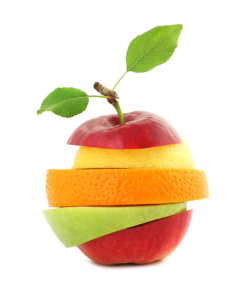

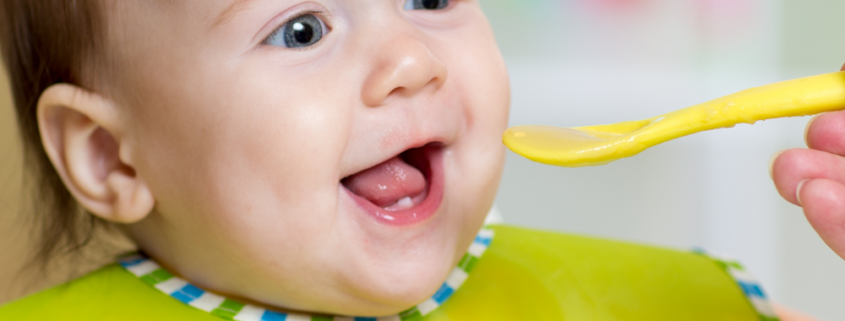
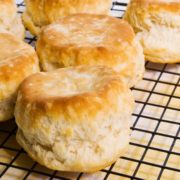
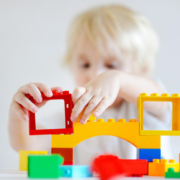
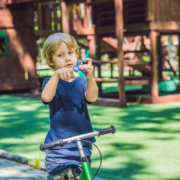







Awesome post. Really looking forward to read more. Great. Benedetta Dill Simmonds
Great! Thank you. So glad you enjoyed reading.